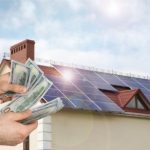Australia, renowned for its sun-drenched landscapes, has embraced solar energy as a key component of its renewable energy strategy. The proliferation of solar panels across the country signifies a commendable shift towards sustainability. However, amidst the benefits lies a growing concern – the escalating risk of solar panel fires. Once considered a seasonal threat, these fires are now a year-round menace, intensifying in frequency and severity. Understanding the factors driving this phenomenon is crucial in devising effective mitigation strategies.
One primary catalyst for the year-round prevalence of solar panel fires in Australia is the country’s unique climatic conditions. With vast stretches of arid land and scorching temperatures, the risk of solar panel overheating and subsequent ignition is heightened throughout the year. In regions like the Australian Outback, where temperatures can soar well above 40 degrees Celsius, the panels are particularly vulnerable to thermal stress. The combination of intense sunlight and high ambient temperatures creates a conducive environment for spontaneous combustion, rendering fire outbreaks a constant threat.
Furthermore, the increase in extreme weather events, attributed to climate change, exacerbates the risk of solar panel fires. Australia is no stranger to bushfires, cyclones, and heatwaves, which have become more frequent and intense in recent years. These events pose a dual threat to solar panel installations – direct damage from flames and debris during bushfires and structural damage from severe winds during cyclones. The aftermath of such events often leaves solar panels compromised, increasing the likelihood of electrical faults and subsequent fires.
Another critical factor contributing to the year-round prevalence of solar panel fires is inadequate maintenance and regulation. As the adoption of solar energy surges, so does the number of installations, ranging from residential rooftops to large-scale solar farms. However, oversight and regulation of these installations have not kept pace with the rapid expansion of the industry. Improper installation, substandard components, and lack of routine maintenance create a breeding ground for electrical faults and fire hazards.
Moreover, the quality of solar panels and associated components varies widely, driven by factors such as cost-cutting measures and market competition. Substandard materials, including low-quality wiring and inverters, increase the susceptibility of solar systems to malfunctions and fires. In many cases, consumers opt for cheaper alternatives without fully understanding the long-term implications, inadvertently putting themselves at risk.
The proliferation of rooftop solar panels in densely populated urban areas further compounds the fire risk. In cities like Sydney and Melbourne, where residential properties are closely clustered, a single solar panel fire can have catastrophic consequences, endangering lives and causing extensive property damage. The close proximity of buildings exacerbates the spread of fires, challenging firefighting efforts and amplifying the scale of the disaster.
Addressing the year-round threat of solar panel fires demands a multifaceted approach, encompassing regulation, education, and technological innovation. Enhanced regulatory frameworks must be established to enforce stringent standards for solar installations, ensuring compliance with safety protocols and quality assurance measures. Regular inspections and maintenance checks should be mandated to identify and rectify potential hazards before they escalate into emergencies.
Public awareness campaigns play a pivotal role in fostering a culture of safety and responsibility among consumers. Education initiatives should focus on informing homeowners about the importance of proper installation, maintenance practices, and the risks associated with substandard equipment. Empowering consumers with knowledge equips them to make informed decisions regarding solar panel installations, reducing the likelihood of preventable accidents.
Furthermore, technological advancements offer promising solutions for mitigating solar panel fire risks. Innovations such as smart monitoring systems and fire-resistant materials can enhance the safety and resilience of solar installations. Real-time monitoring allows for early detection of anomalies, enabling prompt intervention to prevent potential fire incidents. Additionally, the integration of fire-retardant components into solar panel designs can mitigate the spread of fires and limit their impact on surrounding structures.
Collaboration between government agencies, industry stakeholders, and research institutions is essential in developing holistic strategies to address the year-round threat of solar panel fires. By leveraging collective expertise and resources, proactive measures can be implemented to safeguard communities and infrastructure against this growing hazard. With concerted efforts and decisive action, Australia can navigate the evolving landscape of solar energy while mitigating the associated fire risks, ensuring a sustainable and secure future for generations to come.








